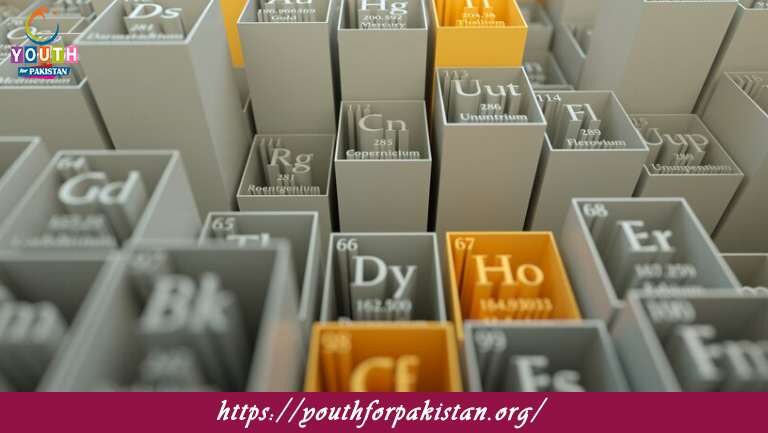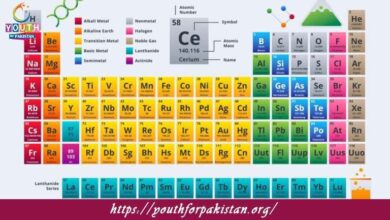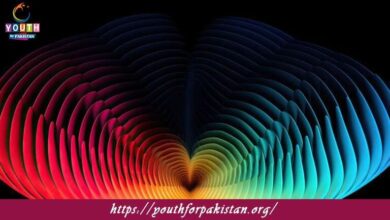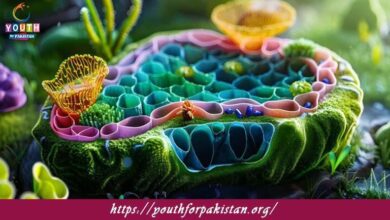12th Class Chemistry Chapter 1 MCQs with Answers

Revise the Periodic Classification of Elements with 12th Class Chemistry Chapter 1 MCQs. Cover trends like atomic radii, electronegativity, and periodicity. Keywords like periodic table MCQs, chemistry periodic trends, and element properties quiz enhance visibility.
Which scientist is credited with the development of the modern periodic table?
a) Dmitri Mendeleev
b) Isaac Newton
c) Albert Einstein
d) Niels Bohr
Elements in the modern periodic table are arranged in order of increasing:
a) Atomic number
b) Atomic mass
c) Electronegativity
d) Number of electrons
The vertical columns in the periodic table are called:
a) Rows
b) Periods
c) Groups
d) Families
How many periods are there in the modern periodic table?
a) 5
b) 7
c) 8
d) 18
The elements in the same group have:
a) The same number of valence electrons
b) The same atomic number
c) The same atomic mass
d) The same number of protons
Which group in the periodic table contains noble gases?
a) Group 1
b) Group 2
c) Group 17
d) Group 18
The elements in Group 1 of the periodic table are also known as:
1
a) Alkali metals
b) Halogens
c) Transition metals
d) Noble gases
Which element has the symbol “Fe” in the periodic table?
a) Fluorine
b) Iron
c) Francium
d) Phosphorus
The elements in Group 17 of the periodic table are also known as:
a) Alkaline earth metals
b) Noble gases
c) Halogens
d) Lanthanides
The element with atomic number 1 is:
a) Hydrogen
b) Helium
c) Lithium
d) Sodium
Which of the following elements is a transition metal?
a) Sodium
b) Zinc
c) Fluorine
d) Carbon
The atomic size generally increases as you move:
a) Up a group and right across a period
b) Down a group and right across a period
c) Up a group and left across a period
d) Down a group and left across a period
Which group contains elements with filled valence electron shells?
a) Alkali metals (Group 1)
b) Alkaline earth metals (Group 2)
c) Halogens (Group 17)
d) Noble gases (Group 18)
Elements in the same group have similar:
a) Atomic numbers
b) Chemical properties
c) Mass numbers
d) Electron configurations
Which of the following elements is a metalloid?
a) Sodium
b) Bromine
c) Silicon
d) Fluorine
The element with the highest electronegativity value is:
a) Hydrogen
b) Fluorine
c) Oxygen
d) Carbon
Which of the following elements is a halogen?
a) Helium
b) Nitrogen
c) Chlorine
d) Potassium
Elements in Group 2 of the periodic table are known as:
a) Noble gases
b) Alkaline earth metals
c) Halogens
d) Transition metals
The element with the lowest atomic number is:
a) Hydrogen
b) Helium
c) Lithium
d) Oxygen
The first ionization energy is the energy required to remove:
a) A proton from an atom
b) An electron from a positively charged ion
c) An electron from a neutral atom
d) A neutron from an atom
The element with atomic number 79 is:
a) Silver
b) Gold
c) Mercury
d) Lead
Elements in the same group have the same number of:
a) Protons
b) Electrons
c) Neutrons
d) Valence electrons
The element in Period 2 and Group 17 of the periodic table is:
a) Oxygen
b) Chlorine
c) Fluorine
d) Nitrogen
Elements in the same period have the same number of:
a) Protons
b) Electrons
c) Valence electrons
d) Energy levels
The element with atomic number 20 is:
a) Calcium
b) Potassium
c) Sodium
d) Magnesium
The electron configuration of chlorine is:
a) 1s² 2s² 2p⁶ 3s² 3p⁵
b) 1s² 2s² 2p⁶ 3s² 3p³
c) 1s² 2s² 2p⁶ 3s² 3p⁶ 4s² 3d¹⁰ 4p⁵
d) 1s² 2s² 2p⁶ 3s² 3p⁶ 4s¹
Which element has the electron configuration 1s² 2s² 2p⁶ 3s² 3p⁶ 4s² 3d¹⁰ 4p³?
a) Sulfur
b) Chlorine
c) Phosphorus
d) Silicon
The element with atomic number 47 is:
a) Silver
b) Copper
c) Zinc
d) Nickel
Which group contains the most reactive nonmetals?
a) Group 1 (alkali metals)
b) Group 17 (halogens)
c) Group 18 (noble gases)
d) Group 2 (alkaline earth metals)
The element with atomic number 3 is:
a) Helium
b) Carbon
c) Hydrogen
d) Lithium
The element with the symbol “K” in the periodic table is:
a) Potassium
b) Krypton
c) Kryptonite (fictional)
d) Platinum
The element with atomic number 56 is a member of which group?
a) Group 1 (alkali metals)
b) Group 2 (alkaline earth metals)
c) Group 17 (halogens)
d) Group 18 (noble gases)
Which of the following elements is a halogen?
a) Chlorine
b) Magnesium
c) Aluminum
d) Sodium
The element with atomic number 17 is:
a) Chlorine
b) Fluorine
c) Bromine
d) Iodine
The element with the highest first ionization energy is:
a) Potassium
b) Sodium
c) Lithium
d) Helium
Which of the following elements is a noble gas?
a) Oxygen
b) Argon
c) Sulfur
d) Nitrogen
The element with atomic number 11 is:
a) Sodium
b) Potassium
c) Calcium
d) Iron
The electron configuration of aluminum is:
a) 1s² 2s² 2p⁶ 3s² 3p⁶ 4s² 3d¹⁰ 4p³
b) 1s² 2s² 2p⁶ 3s² 3p⁶ 4s¹
c) 1s² 2s² 2p⁶ 3s² 3p⁵
d) 1s² 2s² 2p⁶ 3s² 3p⁶ 4s² 3d¹⁰ 4p⁶ 5s² 4d¹⁰
The element with atomic number 16 is:
a) Sulfur
b) Phosphorus
c) Oxygen
d) Nitrogen
The element with atomic number 12 is:
a) Iron
b) Magnesium
c) Nickel
d) Calcium
The element with atomic number 26 is:
a) Iron
b) Copper
c) Nickel
d) Zinc
The element with the lowest electronegativity value is:
a) Fluorine
b) Hydrogen
c) Francium
d) Lithium
Which group contains elements with the highest electron affinity?
a) Alkali metals (Group 1)
b) Alkaline earth metals (Group 2)
c) Halogens (Group 17)
d) Noble gases (Group 18)
The element with the highest atomic number is:
a) Uranium
b) Plutonium
c) Neptunium
d) Curium
Which of the following elements is a noble gas?
a) Helium
b) Bromine
c) Phosphorus
d) Potassium
The element with atomic number 53 is:
a) Iodine
b) Chlorine
c) Bromine
d) Fluorine
Elements in the same group have the same number of:
a) Neutrons
b) Protons
c) Valence electrons
d) Energy levels
Which element has the symbol “Na” in the periodic table?
a) Nitrogen
b) Nickel
c) Sodium
d) Neon
The element with the electron configuration 1s² 2s² 2p⁶ 3s² 3p⁶ 4s² 3d¹⁰ is in which
period?
a) Period 3
b) Period 4
c) Period 5
d) Period 6
The element with atomic number 7 is:
a) Nitrogen
b) Oxygen
c) Carbon
d) Helium
The element with the highest metallic character is:
a) Sodium
b) Potassium
c) Rubidium
d) Cesium
The element with atomic number 8 is:
a) Nitrogen
b) Oxygen
c) Hydrogen
d) Carbon
The element with the highest first electron affinity is:
a) Fluorine
b) Chlorine
c) Oxygen
d) Helium
The electron configuration of nitrogen is:
a) 1s² 2s² 2p⁶
b) 1s² 2s¹
c) 1s² 2s² 2p³
d) 1s² 2s² 2p⁴
The element with atomic number 19 is:
a) Sodium
b) Potassium
c) Calcium
d) Iron
The element with the lowest first ionization energy is:
a) Francium
b) Cesium
c) Rubidium
d) Lithium
Which group contains elements with only one valence electron?
a) Alkali metals (Group 1)
b) Alkaline earth metals (Group 2)
c) Halogens (Group 17)
d) Noble gases (Group 18)
The element with atomic number 36 is:
a) Krypton
b) Xenon
c) Neon
d) Argon
Which of the following elements is a metal?
a) Fluorine
b) Sulfur
c) Iron
d) Chlorine
The element with atomic number 15 is:
a) Nitrogen
b) Oxygen
c) Phosphorus
d) Sulfur
If you are interested to enhance your knowledge regarding Physics, Chemistry, Biology, and Computer please click on the link of each category, you will be redirected to dedicated website for each category.





